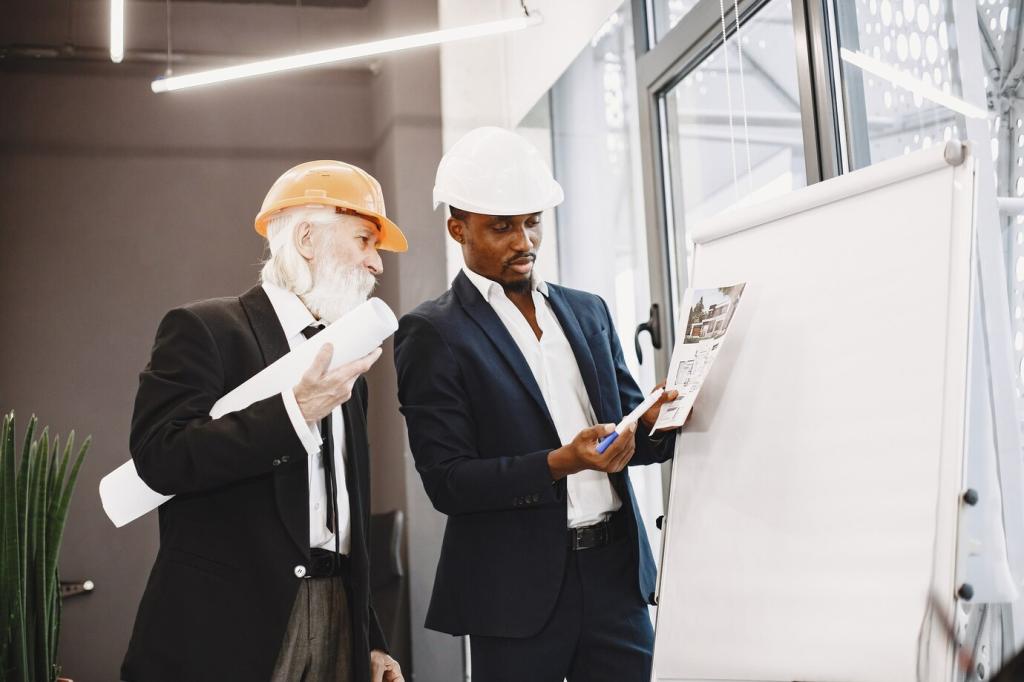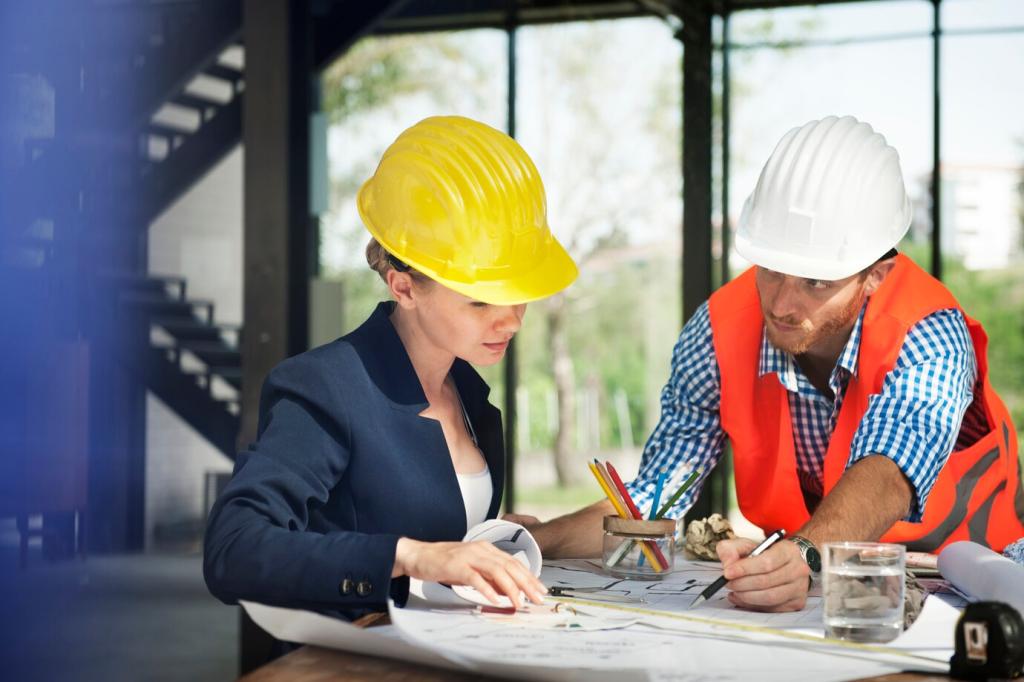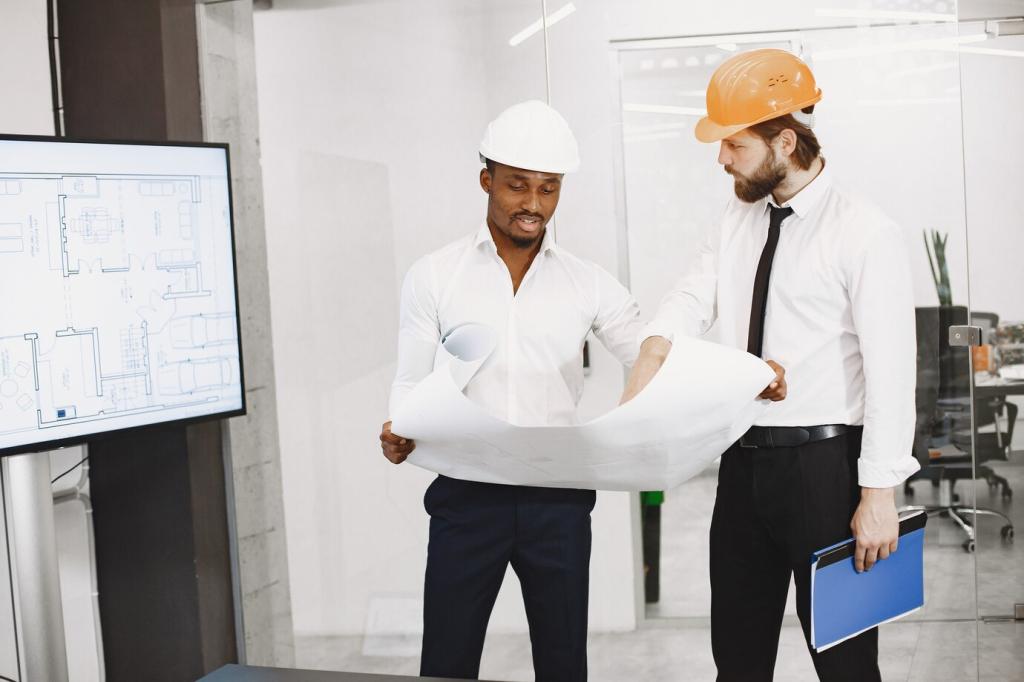Emerging Technologies in Building Industry Consulting
Chosen theme: Emerging Technologies in Building Industry Consulting. Explore how innovators, advisors, and project teams harness AI, digital twins, robotics, IoT, AR/VR, and sustainable materials to deliver smarter, safer, faster, and greener built environments. Subscribe and join the conversation.

AI-Driven Insight: Turning Project Data into Decisions
Predictive Risk Mapping that Changes Outcomes
On a hospital expansion, AI flagged subcontractor sequencing conflicts three weeks ahead, saving a crucial MRI delivery window. The model learned from historical delays, weather patterns, and productivity signals to recommend a tighter, achievable resequencing.
Natural Language Dashboards for Field and Boardroom
Project leaders asked plain-English questions—“Where will we slip next?”—and received visual explanations linking labor shortages, lead times, and permit durations. Transparency grew, blame shrank, and collaboration finally aimed at root causes, not symptoms.
Data Ethics and Trust in Construction AI
Consulting teams now establish governance early: data access rules, anonymization standards, and audit trails. Clear agreements build trust so stakeholders share the information models need to be accurate, fair, and continuously improving.

This is the heading
Lorem ipsum dolor sit amet, consectetur adipiscing elit. Ut elit tellus, luctus nec ullamcorper mattis, pulvinar dapibus leo.

This is the heading
Lorem ipsum dolor sit amet, consectetur adipiscing elit. Ut elit tellus, luctus nec ullamcorper mattis, pulvinar dapibus leo.
Robotics and Automation: Safer, Faster, More Precise Builds
A robotic total station cut layout time by half on a high-rise, reducing rework from misaligned penetrations. Crews trusted the robot because calibration and verification steps were documented in a simple, shared checklist.
Robotics and Automation: Safer, Faster, More Precise Builds
Weekly scans compared as-built conditions to models, flagging deviations early. Instead of disputes, subcontractors met around the point cloud, solved problems objectively, and preserved relationships while protecting margins and milestones.

Sustainable Tech: Low-Carbon Materials and Smart Advisory
Material Transparency and Carbon Dashboards
Teams now compare Environmental Product Declarations side by side, tracking embodied carbon against baselines. One civic project switched to low-clinker cement and recycled steel, meeting climate targets while holding the budget steady.

BIM Evolved: From Coordination to Enterprise Strategy
Information Requirements that Actually Matter
Consultants define Model Element Authoring, data fields, and acceptance tests aligned with owner outcomes. The result is a useful asset database, not just beautiful geometry that goes stale after construction wraps.
Procurement Linked to Reliable Quantities
Accurate takeoffs integrated with supplier catalogs reduce waste and change orders. One contractor used model-based procurement to lock pricing early, cushioning the project against sudden commodity spikes.
From Field Coordination to Safety Insights
Embedding lift plans, access routes, and hazard tags within the model helps supervisors brief crews with clarity. Near-misses decline as risks become visible before the first tool leaves the gang box.


IoT and Smart Buildings: Sensors with a Purpose
Instead of drowning operators with notifications, consultants design thresholds and escalation paths. A chilled-water anomaly triggers a single, informative alert, pointing to probable causes and recommended next steps.
IoT and Smart Buildings: Sensors with a Purpose
Occupancy, CO2, and temperature data inform desk allocation and meeting room policies. Employees feel heard as settings adjust seasonally, and leadership gains objective measurements of productivity and satisfaction impacts.
Seeing the Future Before It’s Built
Community members walked a VR model of a library expansion, noticing sightline issues near the children’s area. Fixes happened instantly in design, not expensively on site months later.
Field-Ready AR for Installation Confidence
Technicians overlayed AR models to position MEP components precisely, avoiding clashes hidden behind drywall. The technology paid for itself by preventing a single major rework, strengthening trust between trades.
Immersive Safety and Skills Training
New hires practiced lift plans and confined-space protocols in a safe virtual environment. Confidence grew, errors dropped, and supervisors reported smoother first weeks compared to traditional classroom orientations.
